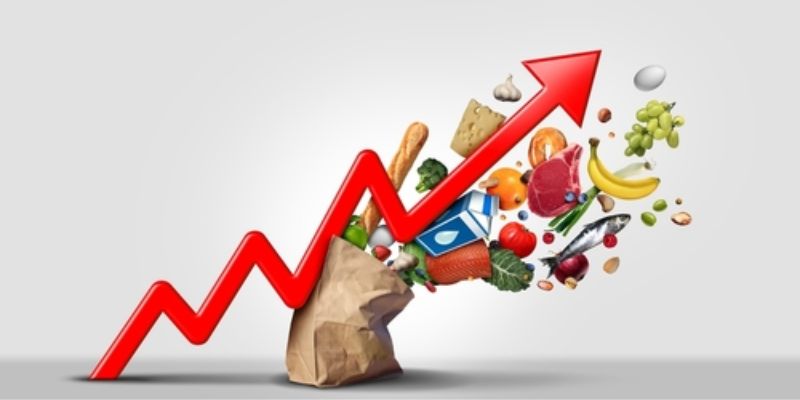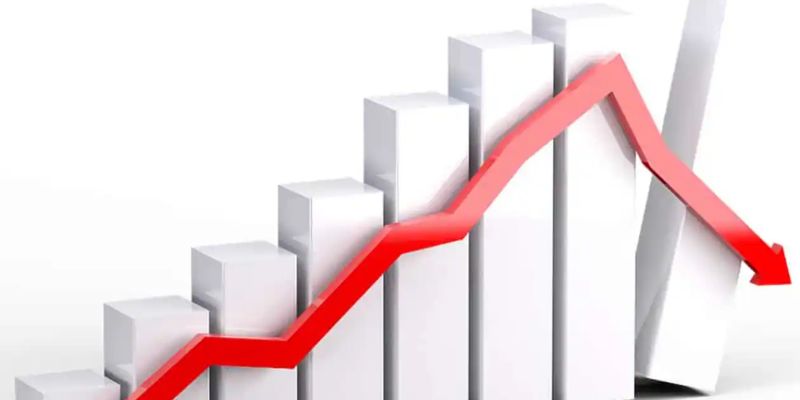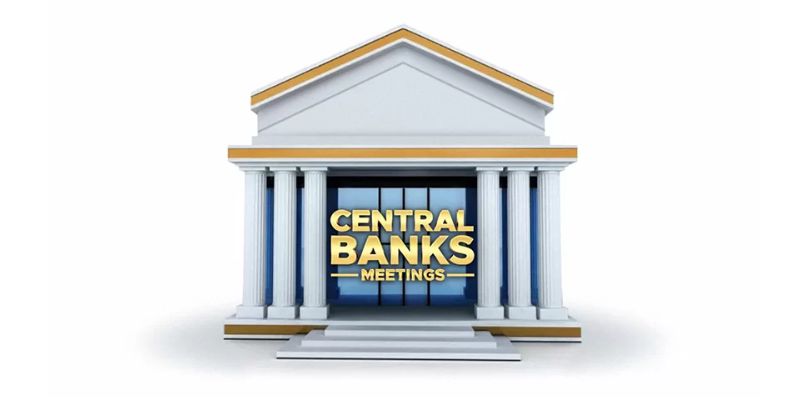Central banks raising interest rates to control inflation—it’s a tactic as old as money itself. But does it work? Let’s dive in. As prices climb higher, we all feel the pinch on our wallets. It’s central banks’ turn to step up, flexing their financial muscle by hiking rates. But this isn’t just about cutting costs; it’s a strategic fight against runaway prices. Can higher rates really bring down the heat of hot economies and put a freeze on Inflation’s relentless rise? Stick with me. I’ll guide you through the maze of monetary policy and break down how this bold action affects your cash, your job, and your future.
Understanding the Mechanism Behind Interest Rate Hikes
The Role of Central Banks in Economic Cycles
Central banks keep our money’s value steady. They aim for stable prices and full jobs. During times of rapid economic growth, prices can climb too fast. This is called inflation. Central banks try to slow inflation by making it costlier for people and businesses to borrow money. They do this by raising key interest rates, such as the federal funds rate or the discount rate.
Now, a central bank might raise interest rates, but what does this do? It cools down the economy. How? Let’s unpack this. When rates go up, loans for cars or homes cost more. Folks think harder before they spend. They might also save more because they get more cash from their bank savings. Businesses might slow down on investing in new projects since borrowing money gets pricier. This leads to less money chasing after goods and services. Over time, this can lower prices, or at least slow down how fast they go up.
How Interest Rates Influence Inflation and Growth
Changing interest rates is like a game of balance. Lower them, and people spend more, but prices can get too high. Raise them, and spending might slow too much, hurting jobs and growth. The ideal is somewhere in the middle. This middle ground helps keep inflation from hurting what we earn and our cost of living.
But it’s not just about today’s prices. It’s also about what we think they’ll be tomorrow. If people expect prices to jump, they might ask for higher wages, which can then push prices up even more. Central banks aim to manage these expectations through their policies. If folks trust the bank to handle inflation, they’re less likely to expect big price hikes. This trust can itself help ease inflation.
Central banks use various tools, not just interest rate adjustments, to manage the economy. They might change how much money banks must keep in reserve or sell extra bonds to pull money out of the system. What’s important is they have options to keep things stable.
Finding the right moment to adjust rates is key. If a central bank acts too late, prices might have already gone up a lot, causing problems for everyone. But if they act too early or too harshly, they might cool the economy too much and cause a recession.
Global inflation trends also play a role. What happens in one country can affect another. Central banks watch these trends to see if they must act. They might raise rates to prevent too much foreign money from pushing prices up in their country. Or, they keep rates stable so businesses can grow without too much cost.
We’ve gone through how central banks use interest rate hikes to control inflation. Remember, they aim for stable prices to help people and businesses plan for the future. They juggle lots of data to decide when and how much to adjust rates. It’s a big deal because it affects how much things cost, how many jobs are out there, and overall, how well an economy is doing.

Impact of Interest Rate Adjustments on the Economy
Consumer Behavior and Investment Decisions
When central banks raise rates, people spend less. They save more because banks pay more for savings. Loans cost more, too. Businesses slow down on spending. They cut back on new stuff like buildings and tools. Consumers cut back on big buys like houses. High rates can slow down a too-fast economy. This helps stop prices from going up too much. We call this inflation. A perfect rate helps people spend and save right. It balances everything out.
Effects on Employment and Currency Stability
Jobs can get hit when rates go up. Companies may not hire much. They wait to see if things get cheaper. But higher rates can also help money keep its value. Other countries might like our money more when rates are high. That can be good for trade. It’s a balancing act. Make money worth enough but keep enough jobs for people. Too high rates can lead to less work. Too low can make prices jump high. Finding the right rate is key. It’s tough but can keep our economy going strong.
In simple terms, what central banks do is they try to make sure our money buys the same over time. They look at something called the consumer price index, or CPI. It shows how much it costs us to buy things we need. When the CPI goes up fast, your money doesn’t go as far. That’s when the central banks step in. They make it costlier to borrow money by raising rates. This is part of their inflation control strategies. It slows down the economy a bit.
People think twice about spending when it costs more to borrow. This drop in spending should help prices from going up too much. It’s like putting a small dam in a big river. It doesn’t stop the flow. It just slows it down. But if the banks get it wrong, we could have less jobs. People might not spend because they’re worried about their next paycheck. This could lead to even bigger problems, like a recession.
Now, interest rate hikes can make our money worth more compared to other countries. When our rates go up, people from other countries might want to save here. This is because they earn more on their savings with us. More people wanting our money can push its value up. This affects how much we pay for things from other countries, our imports, and how much they pay for stuff we make, our exports.
Central banks have to think of so many things when they decide rates. It’s not just about now, but also about the future. They use all sorts of tools. They keep their eyes on how fast prices go up, how regular folks spend or save money, and how much it costs to borrow. All this works together to keep our economy stable.
So, when you hear about the central bank raising rates, now you know why. It’s all about balance. Like walking a tightrope, they have to keep steady. If they lean too much one side, we get high prices with money that buys less. Too much the other way, and people might not have jobs. It’s a tricky job, but when they do it right, we all win. We get money that’s worth the same tomorrow as today and a strong job market.

Navigating the Global Inflation Landscape
Analyzing Current Inflation Trends
Inflation is rising fast today. It means things get more costly. To stop this, central banks are acting. One way they fight inflation is by raising rates. This makes borrowing cost more. Thus, folks and businesses may spend less.
Higher rates help cool off the economy. But what is cool about it? Well, it slows spending and investing. This keeps prices from shooting up more. It’s like telling everyone to slow down.
Right now, inflation is a big talker. We see it in the cost of food to gas. When prices go up, people start to worry. They want their money to buy the same as before. Central banks look at the consumer price index, or CPI. This shows how prices change over time. The CPI helps them decide on rate hikes.
This idea is not new. It works, but with care. Too high, too fast, might hurt growth. It might make jobs harder to get. If you want to dig deep into these shifts, you might check out the details on how interest rate hikes effect economies around the globe.
When central banks jack up rates, it’s big news. Investors and companies watch this. They change how they spend and save. It’s a bit of cat and mouse. Banks must be smart to not trip the economy.
The Inflation Targeting Framework and Its Effectiveness
Central banks have a plan called inflation targeting. They pick a rate they think is just right. Not too hot, not too cold, but just right. The goal? Keep the economy steady and growing.
They want prices stable, not jumping all over. They use rates to steer prices towards the target. It’s like using a map to find the best route there. A steady rate around 2% is often the sweet spot. This way, folks can plan how they spend and save.
But targets aren’t hit by chance. Banks use tools like federal funds rates. That’s the rate banks charge each other. They also use the discount rate. That’s the rate banks pay to borrow from the central bank. These tools guide rates up or down.
It’s not just about now, but the road ahead. Central banks think about how folks feel about inflation. They try to keep everyone calm. When folks expect stable prices, they spend steady. It’s a balancing act with spending, saving, jobs, and growth.
Sometimes, the economy gets too hot. Then, banks may go hawkish. That means tougher action to cool things down. They hike rates to keep prices from running wild. It’s a way to prevent things from getting overcooked.
The key is to get it just right. Too low, too slow, prices might leap up. Too high, too fast, jobs and growth may take a hit. It needs a steady hand and a clear head.
Central banks walk a tightrope. They help make sure money keeps its value. They watch out for things like stagflation. That’s when you get low growth but high inflation. No one likes that mix.
So, you see, rate changes are like a dial. Central banks turn it to keep the economy humming. They aim to give us a steady ride. They want us all to get where we’re going with no sudden bumps.

Anticipating Outcomes of Monetary Policy Decisions
Financial Market Responses to Central Bank Actions
When central banks hike rates, financial markets react. If rates go up, loans cost more. People and businesses then borrow less. This can slow down buying and building things. When spending slows, prices can drop too. This is monetary policy tightening impact at work.
Money gets tight for all. Even big firms feel the pinch. Stocks may dip as investors worry. They think, “Will these companies make less money now?” So, some sell their stocks. This can make stock prices fall even more.
The Balance Between Curbing Inflation and Sustaining Growth
Now, central banks have a tough job. They must fight inflation but keep growth steady. Interest rate hikes are a main tool here. Yet, it’s a balance. Hike too much, and growth might stop. Don’t hike enough, and prices keep soaring.
What’s the sweet spot? It’s not set in stone. Central banks watch many things. They look at how fast prices rise and how people spend. They also check if businesses are cooking with gas or cooling down.
Raising rates can tap the brakes on the economy, so it doesn’t overheat. Price stability goals guide these hikes. Yet, growth should still hum along at a good clip. No one wants stagflation – that’s when growth stalls, but prices zoom up. It’s central banks’ job to sidestep this mess.
Sure, price hikes can squeeze your budget. But unchecked inflation could be way worse. Then, your cash buys even less over time. That’s why central banks use a hawkish monetary stance. They’re tough on inflation to save the day.
Banks also look at the consumer price index. It tells them how much costs have climbed. This data helps shape their inflation reduction measures. Fighting rising prices isn’t fast or easy. But smart moves can keep cash worth its weight.
Bringing down inflation takes a team. Central banks do their part. They tweak the federal funds rate and other rates. But everyone has a role. Workers, businesses, government – all need to pull together. We watch the central banking institutions’ next steps. Our wallets depend on it.
Every rate change is a signal. It tells us how the bank sees the path ahead. Rates up? They’re saying, “We have to calm this price hike frenzy.” When they pause or cut rates? It’s a note saying, “Okay, things can chill for a bit.”
So next time you hear “The bank’s hiking rates!”, think about its juggling act. They must cool down that inflation dragon, without snuffing out growth’s fire. We all want our money to matter tomorrow. Central banks fight to make sure it does.
We just explored how central banks use interest rate changes to steer the economy. They aim to manage inflation and growth by making it more or less costly to borrow money. We’ve seen how these moves affect not just markets but also our day-to-day lives, altering how we spend, invest, and work.
Interest rate tweaks shape everything from our shopping habits to job rates and how stable our money is. In today’s world, where high inflation is a major worry, understanding these policies is key. Countries around the globe use targets to keep prices in check. These targets have to strike a fine balance – rein in costs without stalling jobs and spending.
So, what does this mean for us? As we keep an eye on the central banks’ next moves, we can expect the financial scene to shift. Markets will react, and so will our wallets. Staying informed helps us make smart choices, no matter which way the economy turns. Let’s watch, learn, and be ready.

